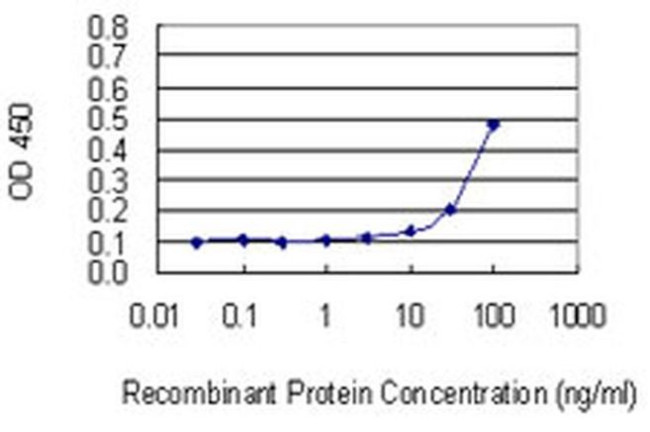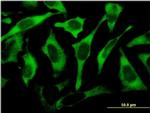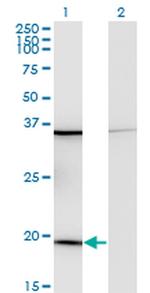Search Thermo Fisher Scientific
Product Details
MA5-19841
Species Reactivity
Host/Isotype
Class
Type
Clone
Immunogen
Conjugate
Form
Concentration
Purification
Storage buffer
Contains
Storage conditions
Shipping conditions
RRID
Product Specific Information
Peptide Sequence: MVRYSLDPED PTKSCKSRGS NLRVHFKNTR ETAQAIKGMH IRKATKYLKD VTLQKQCVPF RRYNGGVGRC AQAKQWGWTQ GRWPKKSAEF LLHMLKNAES NAELKGLDVD SLVIEHIQVN KAPKVRRRTY RAHGRINPYM SSPCHIEMIL TEKEQIVPKP EEEVAQKKKI SQKKLKKQKL MARE
Target Information
Ribosomes, the organelles that catalyze protein synthesis, consist of a small 40S subunit and a large 60S subunit. Together these subunits are composed of 4 RNA species and approximately 80 structurally distinct proteins. This gene encodes a ribosomal protein that is a component of the 60S subunit. The protein belongs to the L22P family of ribosomal proteins. It is located in the cytoplasm. This gene has been referred to as rpL23 because the encoded protein shares amino acid identity with ribosomal protein L23 from Halobacterium marismortui; however, its official symbol is RPL17. As is typical for genes encoding ribosomal proteins, there are multiple processed pseudogenes of this gene dispersed through the genome. Alternative splicing results in multiple transcript variants. Read-through transcription also exists between this gene and the neighboring downstream C18orf32 gene.
For Research Use Only. Not for use in diagnostic procedures. Not for resale without express authorization.
References (0)
Bioinformatics
Protein Aliases: 60S ribosomal protein L17; 60S ribosomal protein L23; gene encoding putative NFkB activating protein; Large ribosomal subunit protein uL22; MGC117162; PD-1
Gene Aliases: L17; PD-1; RPL17; RPL23
UniProt ID: (Human) P18621
Entrez Gene ID: (Human) 6139

Performance Guarantee
If an Invitrogen™ antibody doesn't perform as described on our website or datasheet,we'll replace the product at no cost to you, or provide you with a credit for a future purchase.*
Learn more
We're here to help
Get expert recommendations for common problems or connect directly with an on staff expert for technical assistance related to applications, equipment and general product use.
Contact tech support



